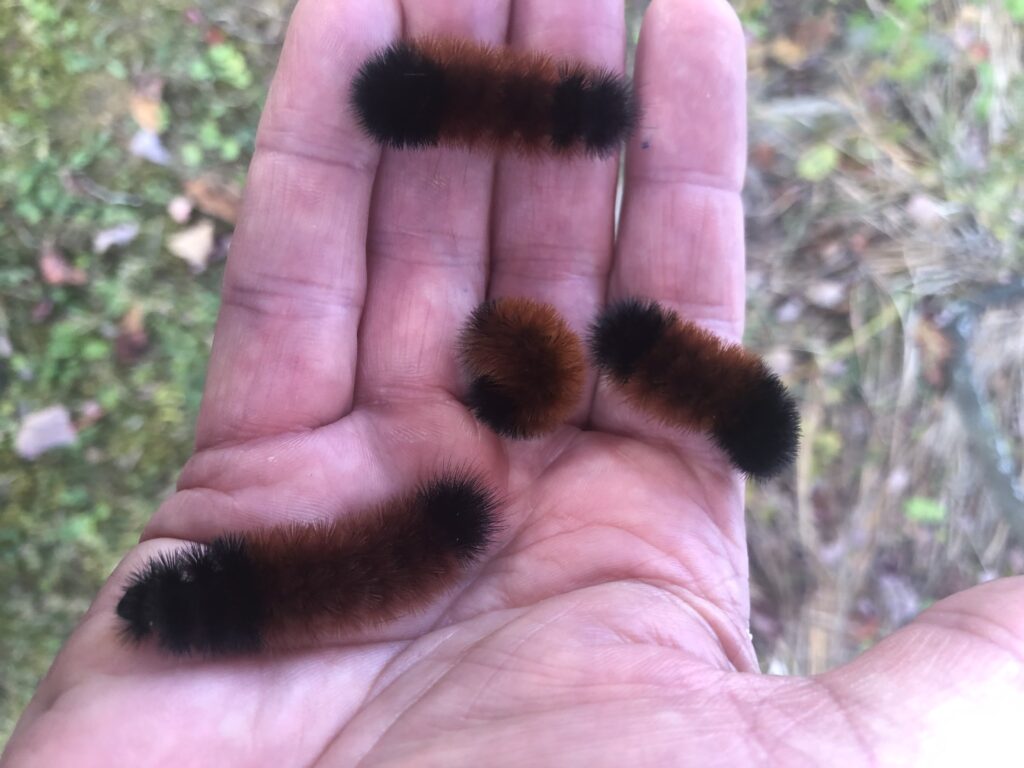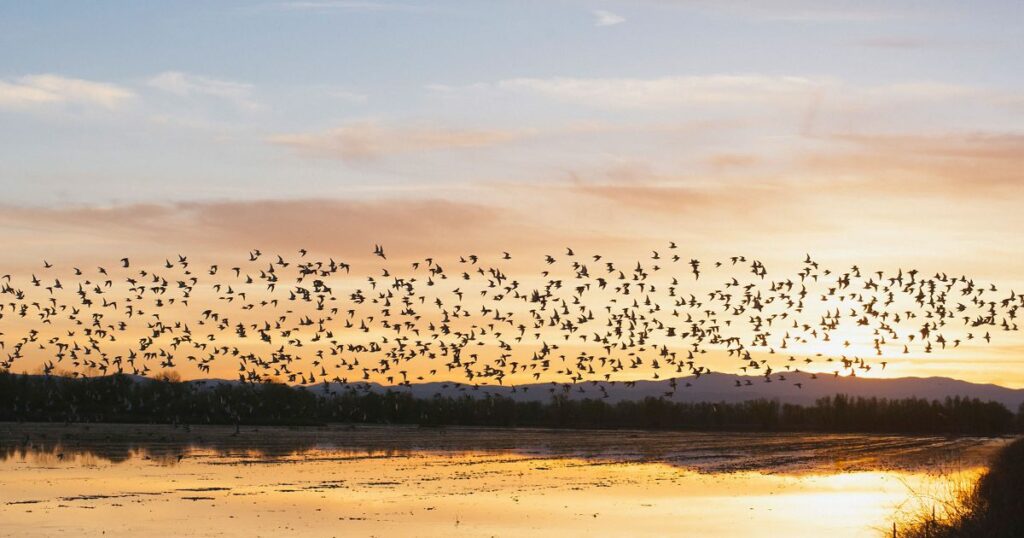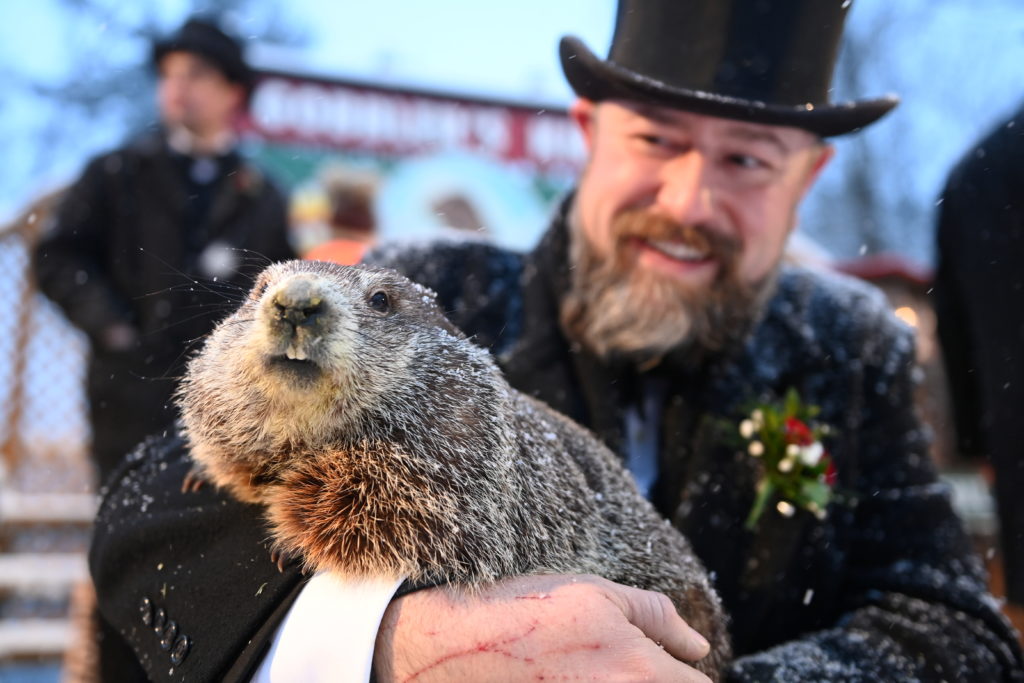People like to find patterns and causes in the natural world, even when they don’t exist. Consider the old joke about “why did the chicken cross the road?” The reason we laugh at the answer is that we are primed for some more important natural pattern than simply “to get to the other side.” We expected so much more! Perhaps because people have wanted to predict the weather since ancient times, there is an abundance of folklore about how to predict the severity of the coming winter.

The idea that you can predict the severity of the coming winter by the stripes on a woolly bear caterpillar is a popular folk tale. We all like seeing the fuzzy caterpillars at this time of year when they are walking across a road or other path. The legend that the size of the brown stripe relative to the black ends was put to the test in 1948 by entomologist Howard Curran as a publicity stunt wherein he claimed there was something to it. Nonetheless, different woolly bears have different stripe sizes, so apparently the caterpillars do not agree among themselves.

Some weather proverbs sound like there might be something to them. Birds migrating early are supposed to indicate a harsh winter, and we can imagine that those savvy birds are getting out while they still can. Of course, bird migration is driven by day length and the weather right now, not the weather that is weeks or months away. Other sayings seem to be completely unmoored by any logic, such as that a large crop of berries, acorns, or walnuts forecasts a cold winter. If nuts have thick shells, or apples have tough skins, or corn husks stick tightly to the ear, these are supposed to indicate harsh winters. Squirrels that build nests high in trees indicate a harsh winter. Hornets building nests high in trees forecast lots of snow. If there are lots of mushrooms, there will be lots of snow. Some legends would be very easy to disprove if anyone bothered. One such saying is that the date of the first snow fall tells how many snow storms to expect in the winter. If the first snowfall is October 18, then there will be 18 snowfalls. How could such nonsense ever get started?

What we might notice from a little study is that there are certainly a great many more folktales about how to predict winter weather than how to predict the summer weather. Perhaps this is because winters are more threatening to us, but certainly a summer drought (or spring flood) would be more damaging to a farmer than a larger-than-usual snowfall in the middle of winter. Yet, apparently Nature has left us few ways of predicting spring and summer. One exception is ever-popular groundhog day, February 2, when a subterranean rodent is supposed to predict if spring will come early or winter will hang on. And what have we learned from Punxatawney Phil over these decades? The various incarnations of Phil have told us to expect six more weeks of winter 107 times, and only 20 times has he said spring would come early. It would seem that on February 2 in western Pennsylvania predicting six more weeks of winter would be a good bet (bringing spring to us in mid March), but according to the Weather Underground, since 1969 Phil has been correct 36% of the time when predicting more winter, and correct 47% of the time when predicting early spring. Maybe it is no wonder that the woolly bears can’t agree among themselves.

